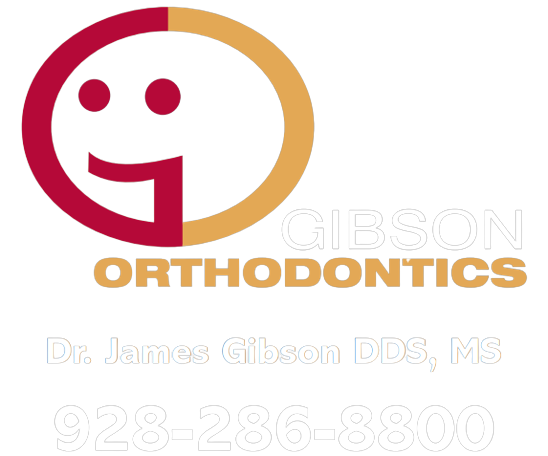Life with Braces
Life with Braces (FAQs)
Your new life with braces is exciting! If you're just starting braces treatment, you may have some questions about what to expect.
We're here to give you answers to all your questions, so you can experience beautiful, lifelong results.
Frequently Asked Questions
- Do braces hurt?
We think you'll be relieved to know that getting braces does not hurt! When we place your braces on, we are simply bonding brackets to your teeth and attaching your archwires to your brackets. This won't cause you any pain.
During the first week you have braces, you may experience some minor soreness as your teeth and gums are adjusting to the support of your braces. You can take some Tylenol or another over-the-counter pain reliever to counteract the soreness. This should subside after the first week or two.
- How long will my treatment take?
This will depend on a few factors, including your goals and the outcome you desire from treatment, your overall oral health, your orthodontic condition, the severity of your case, and your diligence in following directions and wearing your appliances (like rubber bands).
On average, treatment with traditional braces or clear aligners can take anywhere from 12 to 36 months, although in some cases it can take a few months longer.
- Can I play sports with braces?
Yes, your orthodontic treatment won't stop you from living your life the way you want to! If you wear a mouth guard, as needed, it will protect your cheeks, gums, teeth and other players from injury. Ask us about an orthodontic mouth guard.
- What can I eat with braces?
You can still eat at your favorite restaurants. You'll be able to eat tons of delicious snacks, meals and desserts with braces too. During the first week of your treatment, as your teeth and gums are adjusting, you may want to choose softer foods, like pasta, tuna, mashed potatoes, or soup.
Knowing what to eat your first week with braces takes some of your own discretion. You can integrate harder foods into your diet as soon as you're feeling up to it.
Here's a list of foods you can eat with braces:
- Dairy: cream cheese, pudding, milk
- Bread: tortillas, pancakes, muffins
- Grains: pasta, rice, cereal
- Meats: soft chicken, soft meatballs, lunch meats
- Vegetables: cooked carrots, peas, beans
- Fruits: bananas, kiwis, strawberries, grapes
- Treats: ice cream (no nuts), milkshakes, Jell-O, frozen yogurt
- What foods should I avoid with braces?
A careful orthodontic patient can eat almost any food item and do not have any damage to their braces. The key is being careful about the way you chew and the size of your food pieces.
There are four (4) food types that can cause problems and should be avoided as much as possible:
Hard Foods: may do damage by bending the arch wires, loosening the cement under the bands and/or break the brackets, bands, arch wires, and/or appliances.
Sticky and/or chewy foods: can damage appliances by bending arch wires and pulling cement seal loose.
Foods high in sugar content: should be limited or avoided altogether. We recommend brushing and rinsing immediately after eating sweets.
Products with carbonation cause the cement to break down, lesions under the bands/brackets can occur. All diet and regular carbonated drinks should be avoided or limited.
Gum containing sugar (sugar-free is okay)The following is a list of foods that should be avoided!
- Nuts (corn nuts, peanuts)
- No chips (Doritos, Fritos, Takis) Potato Chips are okay.
- No Beef jerky
- No hard-shell tacos (soft tacos are okay)
- No hard, chewy, or sticky candy (Jolly ranchers, Taffy, Gummies)
- No chewing/biting on ice, pens, pencils, or fingernails.
- No popcorn
Have caution when eating the following:
- Hard bread (French bread, hard rolls, pizza crust) tear into small pieces
- Ribs (cut the meat off of the bone.)
- Hard vegetables/Fruit (carrots, corn on cob, apples) okay if cooked or cut into small pieces!
- How do I brush and floss my teeth while wearing braces?
Brushing and flossing around brackets and wires can be challenging if you aren't sure how to get started. When you get your braces on, your orthodontic assistant will show you how to properly brush and floss your teeth.
Maintaining your oral hygiene is especially important during you or your child's orthodontic treatment. If you don't brush and floss regularly, bacteria can grow between your teeth and around your brackets and arch wires, causing permanent stains, cavities, or gum disease.
Here's how to properly brush your teeth with braces:
- Brush the outside and inside of your teeth, as well as the chewing surface and gumline.
- Brush in small circles to reach between your arch wires and around the corners of your brackets.
- Make sure you're brushing thoroughly, but gently enough to avoid damaging your braces.
When flossing between your teeth, it is advisable to use a specialized floss threader with a end that can be inserted through the arch wires, enabling you to floss effectively around your teeth and braces.
